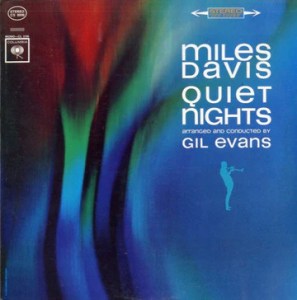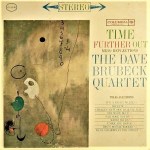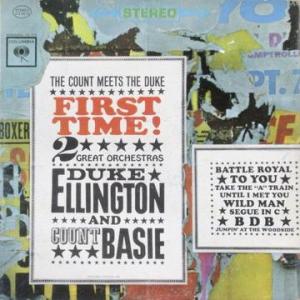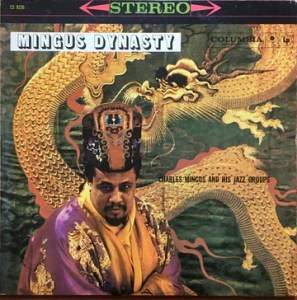- This oh-so-spacious Miles Davis / Gil Evans classic finally returns to the site with INCREDIBLE Shootout Winning Triple Plus (A+++) sound or close to it on both sides of this original 360 Stereo pressing
- Rich, warm, smooth and clear throughout, this 30th Street Studios recording is another engineering triumph from the legendary Fred Plaut
- Produced by Teo Macero, the album is the fourth and final collaboration between Davis and Evans
- In the Saturday Review, Quiet Nights received praise for Davis’ “wonderfully songful trumpet in a Latin-American vein,” set against “piercingly lustrous curtains of tone and discreet Caribbean rhythms.”“
Top Engineers – Fred Plaut
Miles Davis – Sketches of Spain on 6-Eye in Stereo
More Miles Davis
More Vintage Columbia Pressings with Hot Stampers

- With two killer Nearly Triple Plus (A++ to A+++) sides, this 6-Eye Stereo pressing is close to the BEST we have ever heard, right up there with our Shootout Winner
- Reasonably quiet vinyl for an early label pressing, few are this clean, and none come any quieter if our experience with dozens of them over the years counts for anything
- The better copies capture the realistic sound of Davis’s horn, the body, the breath and the bite (and the correct amount of squawk as well)
- Balanced, clear and undistorted, this 30th Street recording shows just how good Columbia’s engineers (lead by the inestimable Fred Plaut) were back then
- 5 stars: “Sketches of Spain is the most luxuriant and stridently romantic recording Davis ever made. To listen to it in the 21st century is still a spine-tingling experience…”
- This pressing is clearly a demo disc for orchestral size and space
On the best pressings of this masterpiece, the sound is truly magical. (AMG has that dead right in their review.) It is lively but never strained. Davis’s horn has breath and bite, just like the real thing. What more can you ask for?
On the better pressings of this masterpiece, the sound is truly magical. (AMG has that dead right in their review.) It is lively but never strained. Davis’s horn has breath and bite, just like the real thing. What more can you ask for?
We Was Wrong in the Past About HP and Six Eye Labels
In previous commentary we had written:
Harry Pearson added this record to his TAS list of super discs many years ago, not exactly a tough call it seems to us. Who can’t hear that this is an amazing sounding recording?
Of course, you can be quite sure that he would have been listening exclusively to the earliest pressings on the Six Eye label. Which simply means that he probably never heard a copy with the clarity, transparency, and freedom from distortion that these later label pressings offer.
The Six Eyes are full of Tubey Magic, don’t get me wrong; Davis’s trumpet can be and usually is wonderful sounding.
It’s everything else that tends to suffer, especially the strings, which are shrill and smeary on most copies, Six Eyes, 360s and Red Labels included.
Over the course of the last few years, we’ve come to appreciate just how good the right Six Eye stereo pressing can sound.
In other words, we was wrong.
A Big Group of Musicians Needs This Kind of Space
One of the qualities that we don’t talk about on the site nearly enough is the SIZE of the record’s presentation. Some copies of the album just sound small — they don’t extend all the way to the outside edges of the speakers, and they don’t seem to take up all the space from the floor to the ceiling. In addition, the sound can often be recessed, with a lack of presence and immediacy in the center.
Other copies — my notes for these copies often read “BIG and BOLD” — create a huge soundfield, with the music positively jumping out of the speakers. They’re not brighter, they’re not more aggressive, they’re not hyped-up in any way, they’re just bigger and clearer.
And most of the time those very special pressings are just plain more involving. When you hear a copy that does all that — a copy like this one — it’s an entirely different listening experience.
Dave Brubeck Quartet / Time Further Out – What to Listen For
More of the Music of Dave Brubeck
Reviews and Commentaries for Time Further Out
The best copies such as this one demonstrate the big-as-life Fred Plaut Columbia sound at its best (even better than Time Out in our opinion).
These vintage recordings are full-bodied, spacious, three-dimensional, rich, sweet and warm in the best tradition of an All Tube Analog recording.
If you want to hear big drums in a big room, these Brubeck recordings will show you that sound better than practically any records we know of.
The one standout track on this album for audiophiles is surely Unsquare Dance, with its uncannily real sounding handclaps in 7/4. The copies that did the best job of reproducing that “flesh on flesh” sound of actual human hands clapping scored very well in our shootout.
More to Listen For
For starters, listen for a fat snare and rich piano on the first track of side one. When you hear that, assuming you do, you should know you are in for a treat. Our best copies captured those two sounds brilliantly.
- More records that are good for testing the sound of the snare drum
- More records that are good for testing the sound of the piano
On the second track the clarity of the brushed snare is key to how resolving and transparent any copy is. The rich, smooth sound of Desmond’s sax balanced against the clarity of the brushes will help you make sure that the overall sound is tonally correct from top to bottom.
- More records that are good for testing transparency
- More records that are good for testing midrange tonality
On side two the first track has the Wall to Wall Big Drums in a Big Room sound that positively blows our minds. If you’re a fan of with jump out of the speakers sound, this is the album for you.
Note that in some places it sounds like the piano is overdriving its mic. We heard that sound on practically every copy we played, so we’re pretty sure it’s on the tape that way.
More Test Discs
We are in the process of making some lists (more lists!) for records we’ve found to be good for testing, tweaking and tuning your system, your room and your front end setup, among other things. You may want to check them out.
- Favorite jazz test discs
- Favorite orchestral test discs
- Favorite rock and pop test discs
- Still more of our favorite test discs
These are the records that challenged me and helped me to achieve more progress in audio. If you want to improve your stereo, these are some of the best records we know of to help get you to the next level.
Recording Time Further Out
(Bolding added by me.)
Mark Wilder was interviewed about the recording of these Fred Plaut sessions..
Fred Plaut and Frank Laico were two of Brubeck’s recording engineers. Plaut is a true balance engineer; he’s my idol. I don’t know how he could pull off what he did in three hours.
He continued:
It’s amazing how well-recorded the group was back then. The sound is so three-dimensional, bigger than life.
Yet it’s amazing how little the engineers did to get that sound. They just put one mic a few feet from each instrument, and mixed live to 3-track—for left, center, and right. Then they edited the tape and mixed down to 2-track.
The old stuff sounds better than what we’re doing now. We’ve been going in the wrong direction sound-wise for many years. The layout of the stereo stage was more realistic then, too. Drums were on the left, piano on the right, sax and bass in the middle.
Dave Brubeck Quartet – Time Further Out in Stereo
More Dave Brubeck
Reviews and Commentaries for Time Further Out
- This vintage Columbia 6-Eye Stereo pressing has some of the best sound we have heard for the album, with both sides earning STUNNING Nearly Triple Plus (A++ to A+++) grades – just shy of our Shootout Winner
- It’s bigger, richer, more Tubey Magical, and has more extension on both ends of the spectrum than practically all the other copies we played
- It’s also graded just one half plus lower on each side than our Shootout Winner, and it has no audible marks, so you might just find that this is the best way to go for Time Further Out
- This copy demonstrates the big-as-life Fred Plaut Columbia Sound at its best – better even than Time Out(!)
- 4 1/2 stars: “The selections, which range in time signatures from 5/4 to 9/8, are handled with apparent ease (or at least not too much difficulty) by pianist Brubeck, altoist Paul Desmond, bassist Eugene Wright, and drummer Joe Morello on this near-classic.”
Time Further Out is consistently more varied and, dare we say, more musically interesting than Time Out.
If you want to hear big drums in a big room these Brubeck recordings will show you that sound better than practically any record we know of. These vintage recordings are full-bodied, spacious, three-dimensional, rich, sweet and warm in the best tradition of an All Tube Analog recording. (more…)
Simon & Garfunkel – Stick to the 360s for the Best Sound
More of the Music of Simon and Garfunkel
Reviews and Commentaries for Parsley, Sage, Rosemary and Thyme
More superb sound from the legendary CBS 30th street studios in New York!
This album checks off some big boxes for us here at Better Records.
- It’s a Top 100 album
- It’s a Demo Disc for Tubey Magic
- It’s a must own album from 1966
- It’s the duo’s best sounding record
- And it has especially Tubey Magical guitars
- It’s part of the core collection of well recorded rock & pop albums
Turn up the volume, turn down the lights, and you’ll have one of the best — if not THE best — folk duos of all time performing right there in your listening room for you. The sound is open, spacious, and transparent with breathy vocals and unusually low levels of spit. The strings are more dynamic than we’re used to hearing and the bottom end has really nice weight to it.
These old Simon & Garfunkel records weren’t often owned by audiophiles who kept their records in pristine condition.
No, these were the popular records of their day, purchased by the record-buying public, and they were played and played hard, typically on cheap equipment. There are many quiet passages on this album that are going to reveal whatever surface issues might exist, so a copy that plays Mint Minus Minus is about as good as you can hope for.
Since only the right vintage 360 pressings have any hope of sounding good on this album, that will most often be the playing condition of the copies we sell.
Audio in the 70s
In my formative years in the hobby, most of the audiophiles I ran into were primarily classical guys. Some played jazz and vocal records, but nobody really put much time and money into their stereo so they could hear radio-friendly pop songs reproduced in higher fidelity.
That was my experience when I first got into audio in the early 70s. It was taken for granted that good equipment existed to play orchestral music, jazz, vocals and not much else.
We Can Help
Below you will find some moderately helpful advice concerning the pressings that tend to win shootouts.
Stick to stereo. The mono pressings we’ve played over the last ten years ranged from passable to awful. We stopped buying them a long time ago. We know of no Simon and Garfunkel albums that sound better in mono than they do in stereo.
As of 2023, Parsley, Sage, Rosemary and Thyme sounds best to us this way:
Miles Davis – Someday My Prince Will Come
More Miles Davis
More Vintage Columbia Hot Stamper Pressings
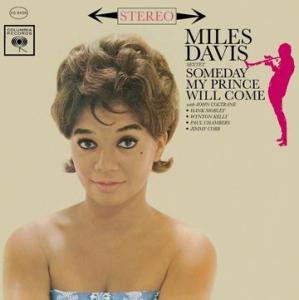
- An outstanding copy of this Miles Davis classic, with a KILLER Shootout Winning Triple Plus (A+++) side one mated to a solid Double Plus (A++) side two
- This original Columbia 6-Eye stereo LP is full-bodied, high-rez and spacious, with Miles’ horn uncannily present, a sound you just cannot find on Heavy Vinyl no matter who makes it
- If you have the big system and dedicated room a record of this quality demands, you can put Miles right in the room with you with a Hot Stamper pressing as good as this
- Vintage pressings that play this reasonably quiet and are free of scratches (minor noted issue below notwithstanding) and groove damage are few and far between, but here’s one, perfect for even the most demanding audiophile
- Another engineering triumph for Fred Plaut at Columbia’s legendary 30th Street Studios – the man is a genius
- Musically this is one of our very favorite Miles albums, and the sound is Demo Disc Quality on the better copies
- If you’re a jazz fan, this Must Own Title from 1961 belongs in your collection
Kind of Blue – Is This a Good Test Record?
Hot Stamper Pressing of Miles’s Albums Available Now
More of Our Favorite Jazz Test Discs
One of our good customers had this to say about some Hot Stampers he purchased recently:
Hey Tom,
Listening to Kind Of Blue. Who needs an equipment upgrade with records like these?
Our reply at the time:
So true!
But on further reflection, it became clear to me that there is more to this idea than one might think upon first hearing it.
When records sound as good as Kind of Blue on vintage vinyl (not this piece of trash), it’s easy to think that everything in the system must be working properly, and, more to the point, reproducing the sound of the album at a high level.
If only more records were as well recorded as KOB, we could save ourselves a lot of time and money, time and money that we’re currently spending on tweaking, tuning and upgrading the various components of our systems. (Assuming you are in fact doing these things. I certainly hope you are. Achieving higher quality sound is one of the greatest joys to be had in all of audio.)
This is undoubtedly true, as far as it goes. But we must live in the world of records as we find it, not the one we want to exist.
Finding good sound for most of the records you wish to enjoy takes a great deal of effort, assuming you are setting your standards for sound at an exceptionally high level. Yours don’t have to be as high as ours — we’re the guys who put their reputations on the line for extravagantly priced Hot Stampers, not you — but the records you are playing have to sound good enough to allow you to forget they are records and just get lost in the music.
With every improvement you make to your system, you eventually will find yourself banging your head up against the psychological effect of Hedonic Adaptation.* Once you have achieved better sound, it doesn’t take long before you get used to it, and now your much-improved “new normal” isn’t as thrilling as it was when you first experienced it.
It’s a common misconception among many audiophiles that if you can make a record like KOB sound great, you must have a good stereo system. Some of them write to us to tell us that the so-called Hot Stamper pressing we just sent them didn’t sound good, which must be the record’s fault since so many of their other records sound just fine.
A certain Bob Dylan record came back to us, twice, something that has never happened before or since. One customer said it just didn’t sound good enough to qualify as a Hot Stamper, and another said it was full of distortion.
In both cases, once the record had come back to us, we immediately played it to see where we might have gone wrong. In both cases it still sounded fine. We realized there was something about it that made it difficult to play, but since we were able to reproduce it properly, there was no way for us to even know what that might be. Eventually the next person to buy it found it to his liking and that was the last we heard of it. Since then no copies have been returned.
We’re Devoted
A great deal of this blog is devoted to helping audiophiles gain a better understanding of the vagaries of high-quality record pressings and the difficulty of finding and setting up the equipment needed to play them.
To this end, we have created a number tests to help improve your playback. Kind of Blue is a phenomenally good sounding jazz record. You can certainly use it as a test disk, but only if you go about it the right way, by setting very, very high standards for it.
Rather than play a record that tends to sound good in order to improve your stereo, set up, etc., why not play something that’s difficult to get to sound good? Once you have improved the sound of such a record, then it will be much more obvious that your efforts were actually successful. (Here are some of the toughest test discs we’ve encountered over the years.)
We live the challenges posed by difficult recordings, not the ones that are easy to reproduce.
If you want to test the limits of your system, here are some difficult to reproduce records that will allow you to do it.
And if you want to buy some records that sound great but are difficult to reproduce, these Hot Stamper pressings should do the trick.
*Psychology Today explains one aspect of the Hedonic Treadmill this way:
What are examples of hedonic adaptation?
After moving to a new house or apartment, one may revel in the extra room, the higher ceilings, the improved view to the outside, or other features—only to stop appreciating these things as much as the months wear on. The same could be said for the mood boost we might receive from other new possessions or highly anticipated experiences… such that eventually, their level of happiness returns back to where it started, or at least closer to the baseline than immediately after the event.
Ellington-Basie / First Time – The Count Meets the Duke
More Duke Ellington
More Count Basie
- This original 6-Eye Stereo pressing was doing pretty much everything right, with both sides earning superb Double Plus (A++) grades or BETTER
- Reasonably quiet vinyl too, considering its age – how many early ’60s Columbia Stereo pressings survived with audiophile-quality playing surfaces the way this one did?
- Huge amounts of three-dimensional space and ambience, along with boatloads of Tubey Magic – here’s a 30th Street recording from 1961 that demonstrates just how good Columbia’s engineers were back then
- If all you’ve heard are the Classic Records reissues of Ellington, you are in for a treat, because there is a world of difference between the real thing and the Classic wannabe
- It’s yet another Tubey Magical Demo Disc from the Golden Age of Vacuum Tube Recording
- 4 1/2 stars: “… a very successful and surprisingly uncrowded encounter… Ellington and Basie both play piano (their interaction with each other is wonderful) and the arrangements allowed the stars from both bands to take turns soloing.”
- If you’re a fan of either or both of these jazz giants, this classic jazz album from 1961 belongs in your collection
Charles Mingus – Mingus Dynasty
More Charles Mingus
More Jazz Recordings
- An original 6-Eye Stereo copy with superb Double Plus (A++) sound on both sides
- Exceptionally quiet vinyl for an early stereo pressing – unscratched, well-cared-for copies such as this one are getting awfully hard to find nowadays
- This pressing is rich and tubey, yet still clear and spacious, with a notably solid and articulate bottom end that does a superb job of capturing the beauty of Mingus’s double bass
- Bucketfuls of studio ambience, and Tubey Magic to die for – this 30th Street recording shows just how good Columbia’s engineers were back then
- Best be warned – a Demo Disc such as this mayl make all your Heavy Vinyl pressings sound as lo-rez, lifeless and veiled as we know them to be, a reality you may not want to confront, but a reality all the same
- 4 1/2 stars: “Mingus Dynasty is still an excellent album; in fact, it’s a testament to just how high a level Mingus was working on that an album of this caliber could have gotten lost in the shuffle.”
- If you’re a fan of jazz from the Golden Age of the ’50s and ’60s, this Columbia from 1960 undoubtedly belongs in your collection
This is a wonderful example of the kind of record that makes record collecting FUN.
If innovative Large Group Jazz is your thing, you should get a big kick out of this one. If you like the sound of relaxed, tube-mastered jazz — and what red blooded audiophile doesn’t? — you can’t do much better than the Mingus recordings on Columbia from this era. (We’ve now done shootouts for the album before this one and the one to follow. Both are amazing, musically and sonically.) The warmth and immediacy of the sound here are guaranteed to blow practically any record of this kind you own right out of the water.
Both sides of this very special pressing are huge, rich, tubey and clear. As soon as the band got going we knew that this was absolutely the right sound for this music.
Amazing Tubey Magic
For we audiophiles, both the sound and the music here are enchanting. If you’re looking to demonstrate just how good 1960 All Tube Analog sound can be, this killer copy should be just the record for you.
It’s spacious, sweet and positively dripping with ambience. Talk about Tubey Magic, the liquidity of the sound here is positively uncanny. This is vintage analog at its best, so full-bodied and relaxed you’ll wonder how it ever came to be that anyone seriously contemplated trying to improve it.
This is the sound of Tubey Magic. No recordings will ever be made like this again, and no CD will ever capture what is in the grooves of this record. There is of course a CD of the album, but those of us in possession of a working turntable could care less.
We played a handful of later pressings that didn’t really do it for us. They offer improved clarity, but can’t deliver the tubey goodness that you’ll hear on the best early pressings. We won’t be bothering with them anymore. It’s tubes or nothing on this album.
The Dave Brubeck Quartet – We Was Wrong Again
More of the Music of Dave Brubeck
Reviews and Commentaries for Time Further Out
About five years ago we wrote:
The monos we played in our last two or three shootouts didn’t do much for us. They tended to be thin and hard sounding, and of course much of the space of the studio disappears completely. One side of one copy did well enough I suppose, but my advice would be to avoid them if you’re looking for top quality sound.
Years before we had discovered an outstanding mono copy and described it this way:
This Columbia Six-Eye pressing is THE BEST SOUNDING MONO COPY OF THIS ALBUM WE’VE EVER HEARD! The better Mono pressings of this album give you extra immediacy, more solidity to the drums, and energy like you wouldn’t believe. That makes the drum solo on side two sound OUT OF THIS WORLD. Most copies are congested and veiled, but not this one! The sound is spacious and transparent with wonderful presence. You will not believe how lively it is!
Both sides are rich and full-bodied with lots of sweetness and extension up top. The energy and transparency are wonderful. The bass is a bit tubby, but that’s what you get on these vintage Six Eye pressings. It’s worth it when there’s as much tubey magic as you get on this pressing.
Fast forward to 2023 and once again we manage to stumble upon a rare 6 Eye Mono pressing in our shootout that had the Time Further Out goods:
- With superb Double Plus (A++) sound throughout, this vintage 6-Eye Mono pressing will be very hard to beat – fairly quiet vinyl too
- It’s extremely unlikely that any mono pressing will win a shootout, but just to keep us on our toes, we like to put some monos of famous albums in our shootouts from time to time to see how they measure up
- This 2+ early pressing was the best of the bunch, and it’s guaranteed to beat the pants off any modern Heavy Vinyl pressing ever made
So there you have it. The right mono pressings can sound very good indeed.
Apparently, we was wrong to think we was wrong.
